
How to Get Reviews on Amazon – 9 Proven Tips
Amazon product reviews are incredibly important to consumers. 95% of shoppers consult reviews before making a purchase.
And they’re not just great for driving conversions. Reviews also provide SEO value in the words of real customers. Their authenticity makes them searcher-friendly by nature. Plus, it’s a great way to receive feedback and continue to improve your product and the customer experience.
That’s all fantastic. The problem is, they’re tough to come by — especially for a new product.
We surveyed over 1,000 Amazon shoppers on what influences their purchasing decisions. The results show that shoppers are 46% less likely to buy your product if it has a 3.5-star rating compared to a 4-star rating. Just a half-star drop could cut your sales in half.
This is why it’s important to not only collect customer reviews but to also continually manage your ratings and reviews on Amazon.
How to Get Reviews on Amazon
First: What are Amazon’s Guidelines for Product Reviews?
Like most platforms which allow for reviews, Amazon has guidelines you need to meet. They’ve also put together an FAQ page about product reviews where you can get more clarity and direction.
It essentially boils down to this: Amazon wants honest reviews from real people.
According to their Prohibited seller activities and actions page, any attempt to solicit fake reviews is not allowed.
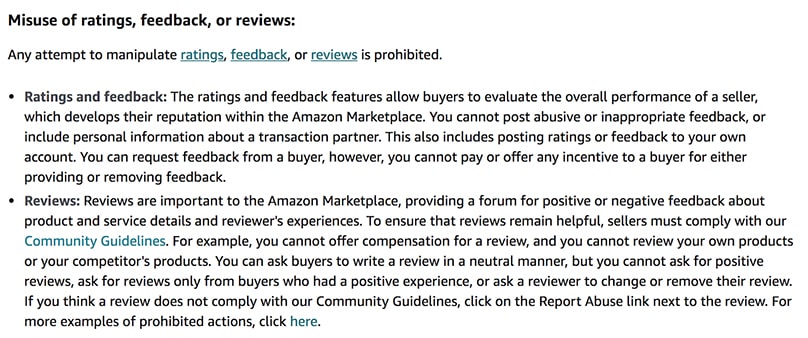
That’s a lot of print to read, so here’s a high-level checklist of the DOs and DON’Ts for Amazon reviews:
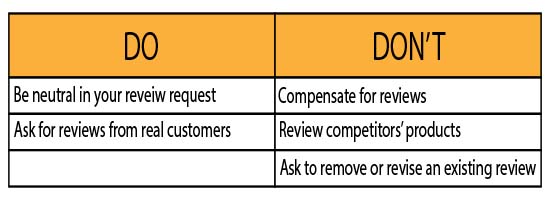
At the end of the day, Amazon’s main goal is to create a great customer experience. Play their game, and they’ll help you win.
9 Tips to Get Amazon Reviews
-
- Get Started with Amazon’s Early Reviewer Program
- Recruit Amazon Top Reviewers
- Leverage Current Customer Relationships
- Set Up a Drip Email Campaign
- Include Packing Inserts
- Turn Seller Feedback into Product Reviews
- Create an Amazon Giveaway or Discount Pricing
- Make Your Product Page Helpful
- Deliver a Shareable Customer Experience
1. Get Started With the Amazon Early Reviewer Program
The Early Reviewer Program is especially great for new product listings or listings without many reviews.
Here’s how it works: Amazon randomly selects customers who have not left a review for a past purchase. They request the customer leave a review within a specified time period, and Amazon will reward them with a small gift card.
Yes, yes, Amazon is breaking their own rules about not providing incentives for reviews. But, hey, it’s Amazon…they can do what they want.
To take advantage of this program, first you’ll need to register your brand with Amazon and then you can pay a $60 fee per parent SKU, which gets you five reviews. A few other parameters:
- Your product must have fewer than five existing reviews.
- SKUs must be parent level or standalone. No variations allowed. Child SKUs are automatically enrolled with the parent.
- The offer price for each product must be greater than $15.
2. Recruit Amazon Top Reviewers
The list of Amazon Top Reviewers is a great place to find Amazon shoppers who actively leave product reviews. The Top Reviewer Rankings tab lists the recent or current top contributors, while the Hall of Fame Reviewers are the top contributors of all time. It’s a good idea to check both.
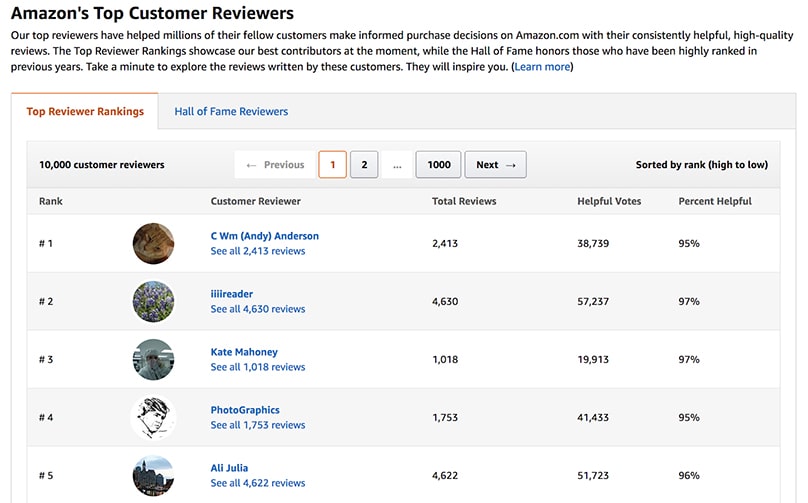
The benefit of tapping into this resource is that Amazon already recognizes these individuals as legitimate. And once they leave a review for your product, it typically holds more weight — their esteemed title is listed next to their name.
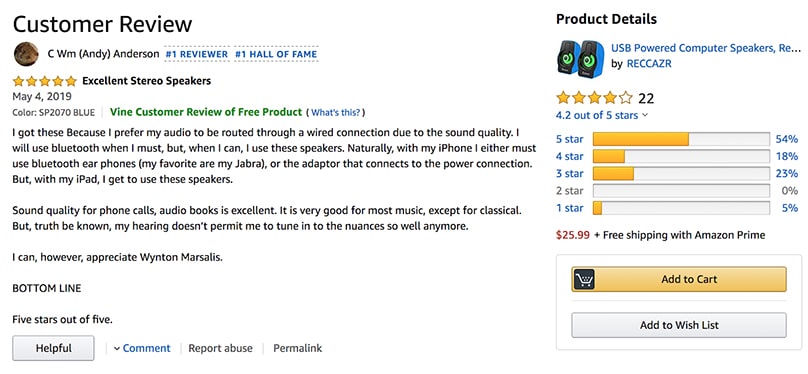
Create a list of reviewers who are interested in products similar to yours or in your niche. Then dig deeper into each of those reviewers’ profiles and look for contact information: an email address, website or social media profile.
Now it’s time for outreach. This begins with developing your pitch. While you can develop a template to follow, customizing your pitch for each recipient is key. Show that you’ve read their reviews and determined that your product would be of interest to them. Then offer to send them your product, with the hopes that they’ll provide an honest review — but make it clear that a review is NOT a requirement.
3. Leverage Current Customer Relationships
Amazon doesn’t release your customers’ email addresses, but that doesn’t mean brands don’t have other means of collecting this information. If you’ve built up an email list from your own ecommerce website, a social media following, or by using paid tools you can leverage this audience to garner more Amazon reviews.
Share a social post or send an email asking for Amazon product reviews, specifically for products you know they’ve purchased on your owned channels in the past and that you’re now promoting on Amazon.
One approach we recommend is to write something like:
We’ve just launched our products on Amazon and would love honest feedback on your experience with our product. You can leave a review here.
Make it easy: include a link that takes users directly to the Amazon review page to reduce friction. This will help, especially in the beginning, bring in more views and relevant reviews from customers who’ve already purchased and interacted with your product.
There is a way to solicit reviews through Amazon, too. For example, if you’ve provided support to a customer through the marketplace, you can follow up with them and ask for a review about their experience.
4. Set Up a Drip Email Campaign
In our opinion, the most important tip to get more Amazon reviews is drip email campaigns. This is a long-term strategy, so don’t expect to see results overnight, but the long-term benefits can seriously pay off.
What is a drip campaign?
A drip campaign is an email campaign or marketing strategy where you send a sequence of emails or other messages to customers after they purchased your product. These are typically automated, so after a customer takes a specific action (like purchasing your product), this will trigger a sequence of emails at the cadence of your choice. In Amazon, it’s a crucial technique to increase positive reviews and prevent negative ones.
When building your drip campaign, here’s what we recommend:
- Email #1: Send this when the product is shipped to the customer. Thank them for their purchase and provide something of value — maybe product setup or care instructions to help customers understand how the product works. It’s also a good idea to let customers know the best way to get in touch with support, should they need it.
- Email #2: Send this right after the customer receives the product. Ask them if they received everything as expected or if there are any problems you need to address. This is another touchpoint for the customer, but also a proactive way to avoid negative reviews. Rather than broadcasting their woes in a review, they can contact you directly.
- Email #3: Send this 7–14 days after the customer received the product (the timing will depend on your product and how quickly it can be installed/used). This is where you ask for a review. Let them know that you hope they’ve been enjoying the product and you appreciate their business, and then request honest feedback on their experience. Again, provide a direct link to leave a review on Amazon. Here’s a template you can use for this email.
Pro tip: Looking to make this task a bit easier? With tools like Feedback Genius, you can customize your emails, use pre-made templates, and schedule automated emails throughout the purchase process. Most of these tools even offer a free version that comes with plenty of features to get you started.
For more in-depth instructions on how to use Feedback Genius to implement your Amazon drip campaigns, check out our video below.

5. Include Packing Inserts
Product packaging is an integral part of the customer experience. In fact, Dotcom Distribution found that 40% of shoppers would be more likely to make a repeat purchase from a brand if their first order came in premium packaging.
One element of your packaging is a packing insert. These inserts should thank the customer for their purchase, let them know how to get in touch with support, and solicit an honest review. This approach is similar to the drip campaigns but takes on a more tangible form.
Barbeque Gloves puts this packing slip in their orders:
Here’s another example to help you get started:
As a family-owned company, we appreciate your trust in us and our products. If you have any concerns or problems with your order, please contact us at customerservice@disbiz.com. It’d be helpful to our business and our family if you could leave us an honest review on our Amazon product page.
This will allow you to bring in more customer reviews and also prevent any negative customer reviews of your product by directing them to customer service for any concerns.
What happens if you do receive bad reviews? Check out our guide on how to respond to negative Amazon reviews.
6. Turn Seller Feedback into Product Reviews
If you’ve received positive seller feedback from a customer, but they haven’t left a product review, you can reach back out to them and ask for one. Many Amazon customers don’t even realize there’s a difference between seller feedback and product reviews. Seller feedback is intended to be about you, the seller, and the overall experience you provided to the customer, from shipping to customer service. Product reviews are about the specific product that the customer ordered and their experience directly with the product.
When reaching out to a customer that left seller feedback, remember to thank them for their purchase and for the feedback they’ve already provided. To help them leave a product review, you can link them directly to your product’s review page and provide instructions on how to leave their review. You can either include screenshots and a step-by-step guide, or link to Amazon’s support article here.
7. Create an Amazon Giveaway or Discount Pricing
Sure, this is another tactic that seems to go against Amazon’s guidelines. The difference here is that a giveaway isn’t a guarantee of a free product.
Amazon actually has its own giveaway platform that merchants can use to build buzz about their products. This buzz will likely lead to more sales which leads to more opportunities to collect reviews. You simply choose a product, pay for the prizes, and submit the giveaway to Amazon — there are no additional fees.
You can choose whether to allow Amazon to promote your giveaway or take a more hands-on approach. If you choose to market it yourself, remember to avoid making any promises of winning or receiving a product. Always reiterate that participants “have a chance” to win.
What’s cool about Amazon Giveaways is that you can offer a discount to those who don’t win.
Discounts are also especially helpful for new products with minimal reviews. Often, customers will look for the lowest price and seeing a discount makes the price point more appealing. This is also a more-sales-more-reviews approach.
8. Make Your Product Page Helpful
If you want to know a lesser-known way of how to get more Amazon reviews, consider your product page. On-page changes can affect customer feedback.
Focus bullets, product descriptions, and Enhanced Brand Content on customer questions or concerns so you can accurately set expectations on how to use the product. This not only alleviates negative reviews but encourages positive ones, since you’re making it easier for them to adopt and use the product.
For example, we’ll create step-by-step instructions for clients who have products with a complicated or difficult setup.
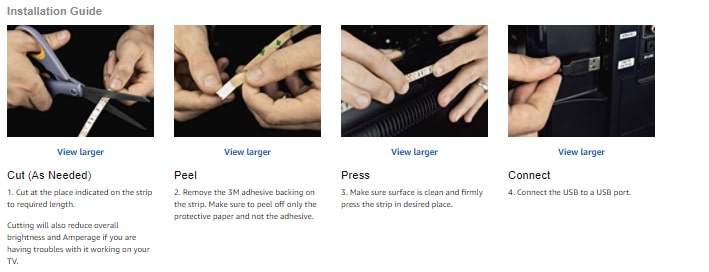
9. Deliver a Shareable Customer Experience
We touched on the importance of product packaging in the customer experience, and many of the tips above center around this common principle: Give your customers an experience worth talking about.
Though it might surprise you, consumers are more likely to share positive brand experiences (42%) with friends and family than negative ones (32%). This includes proactive customer support, surprise and delight, high-quality products, and a great delivery and unboxing experience.
Here’s a great example where the product packaging was so impressionable that the customer actually noted it in the content of their review, as well as shared a photo:
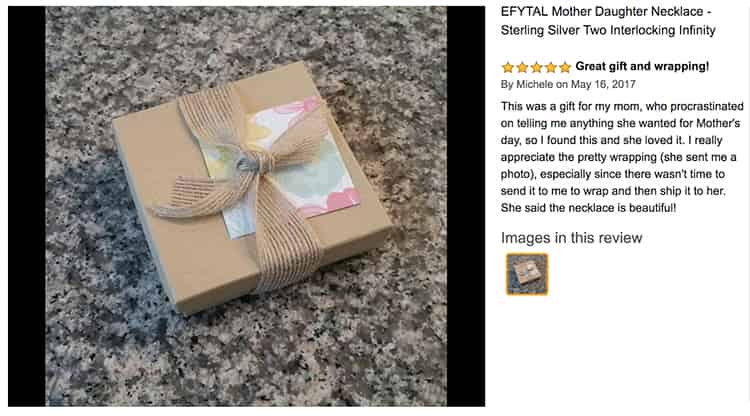
So, which of the suggestions above are our top tips? Watch the video below to get more info on which five strategies we recommend the most and how to implement them today:
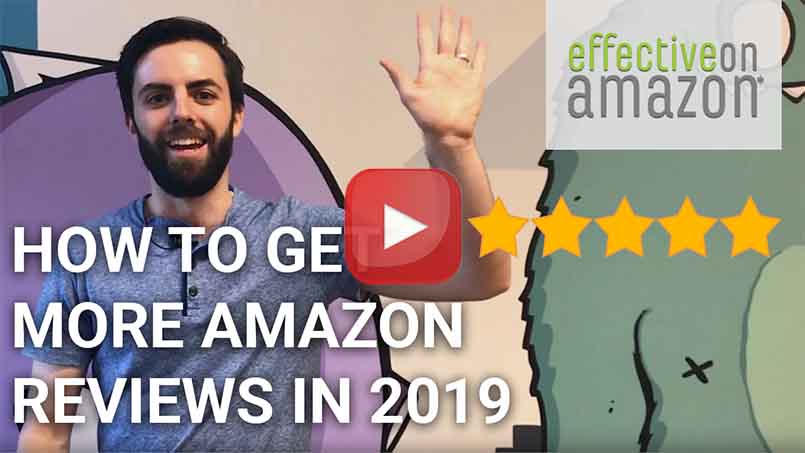
Moving Forward With Your Amazon Strategy
Attracting and managing customer reviews on Amazon is just one small piece to the puzzle. To really capitalize on the potential of selling on Amazon, you need a multi-pronged approach to marketing your Amazon store.
Learn more about Effective Spend’s Amazon marketing services and read a case study on how we drove a 306% increase in revenue for one of our clients.




